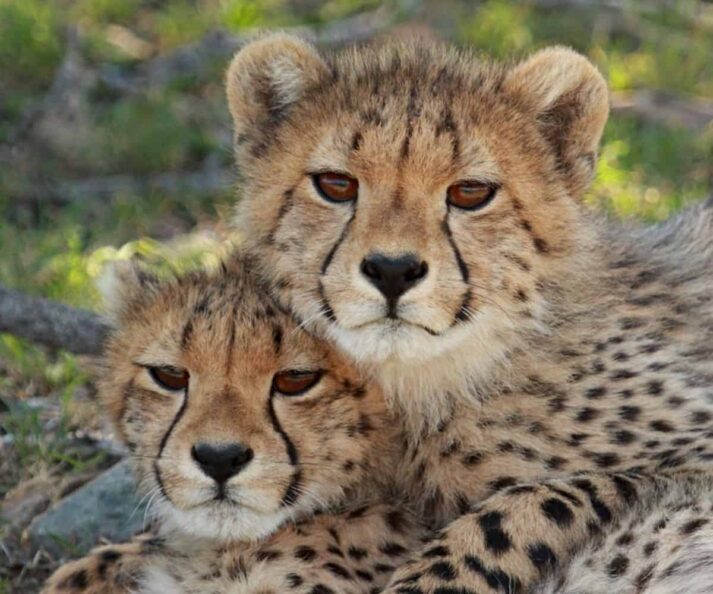Samara Karoo Reserve: A Beacon of Conservation and Ecotourism in South Africa
Nestled in the expansive Great Karoo of South Africa, Samara Karoo Reserve stands as a testament to successful conservation and environmental restoration efforts. Founded in 1997 by Sarah and Mark Tompkins, the reserve encapsulates a visionary rewilding initiative aimed at returning the region to its former glory—a wilderness where species like the springbok, quagga, and black-maned lion once thrived.
Conservation and Restoration Efforts
At the core of Samara’s mission is a deep-seated commitment to conservation. Over the past two decades, the reserve has implemented extensive habitat restoration strategies, eradicating invasive plant species and promoting the regrowth of native vegetation. These efforts have culminated in a resurgence of both flora and fauna, as Samara becomes one of South Africa’s leading conservation destinations.
The reserve now boasts the successful reintroduction of numerous key species that had long been absent from the area. Cheetahs, black rhinos, elephants, and lions have returned to roam the landscape, marking a significant milestone in the ecological restoration of the region. Sarah Tompkins emphasizes, "Our goal is to create a self-sustaining ecosystem that fosters biodiversity and allows wildlife to thrive in its natural habitat."
Rewilding: Reviving Lost Species
The rewilding efforts at Samara focus on bringing back species previously driven to local extinction. One notable success was the reintroduction of cheetahs in 2004, with a female named Sibella playing a crucial role in this initiative. Sibella’s remarkable story includes recovering from a brutal attack, and she has contributed significantly to South Africa’s cheetah population, producing around 50 cubs within the reserve.
In 2014, the addition of lions further highlighted the program’s success, helping to restore the prey-predator balance within the ecosystem. Tompkins remarks, "The presence of lions is critical not just for managing herbivore populations but also for maintaining the overall health of the environment."
Biodiversity and Wildlife Variety
Samara is home to over 60 mammal species, including the famed "Big Five"—lion, elephant, buffalo, leopard, and rhino. Additionally, the reserve hosts a diverse array of wildlife such as giraffes, springboks, and various birds, each playing a unique role in the ecosystem. The return of species like the Cape vulture signifies the effectiveness of the rewilding strategies implemented.
The reserve spans five of South Africa’s nine vegetation biomes, including montane grasslands, subtropical thickets, and savannahs, each supporting different wildlife and plant species. This diversity not only enriches the ecological landscape but also enhances visitor experiences, offering a variety of sightings and activities.
Community Engagement and Sustainable Practices
At Samara, social sustainability goes hand in hand with environmental stewardship. The reserve provides job opportunities in hospitality and conservation, ensuring that local communities directly benefit from tourism. Training programs are specifically designed to empower locals, with skills in guiding, wildlife monitoring, and hospitality being shared among community members.
Moreover, Samara engages with local schools through environmental education initiatives, fostering a deeper understanding of wildlife and encouraging young generations to become advocates for conservation efforts. This dual approach empowers both the land and the people, demonstrating that community involvement is crucial to successful conservation.
Visitor Experience and Accommodation
Samara is not only about conservation; it also offers a unique ecotourism experience, accessible through a three-hour drive from Gqeberha (formerly Port Elizabeth) or via chartered flight. The reserve features a variety of accommodation options catering to families, couples, and groups.
- The Karoo Lodge offers modern comforts fused with traditional Karoo style.
- The Manor House is designed for exclusive use, ideal for family gatherings.
- The Star Bed provides a romantic experience under the stars.
- Plains Camp delivers an off-grid adventure with an emphasis on walking safaris.
Activities include guided game drives, walking safaris, and specialized tracking experiences, allowing guests to witness the wildlife and stunning landscapes up close.
Future Vision for Samara
The vision for Samara encompasses a more extensive wildlife network, much larger than its current borders. Plans for expanding the reserve by an additional 4,000 hectares aim to reestablish migratory routes and further enhance biodiversity. This ambitious objective aligns with the long-term goal of connecting Samara to nearby parks, thus creating a more cohesive habitat for wildlife.
Conclusion: A Model for Conservation
Samara Karoo Private Reserve not only offers visitors a remarkable glimpse into the wild beauty of South Africa but also actively contributes to the preservation of its natural heritage. The ongoing conservation efforts, combined with inclusive community engagement and a compelling ecotourism experience, underscore its importance as a model for conservation worldwide. Visitors to Samara are not just tourists; they play an integral role in supporting a sustainable future for wildlife and habitats in South Africa.









